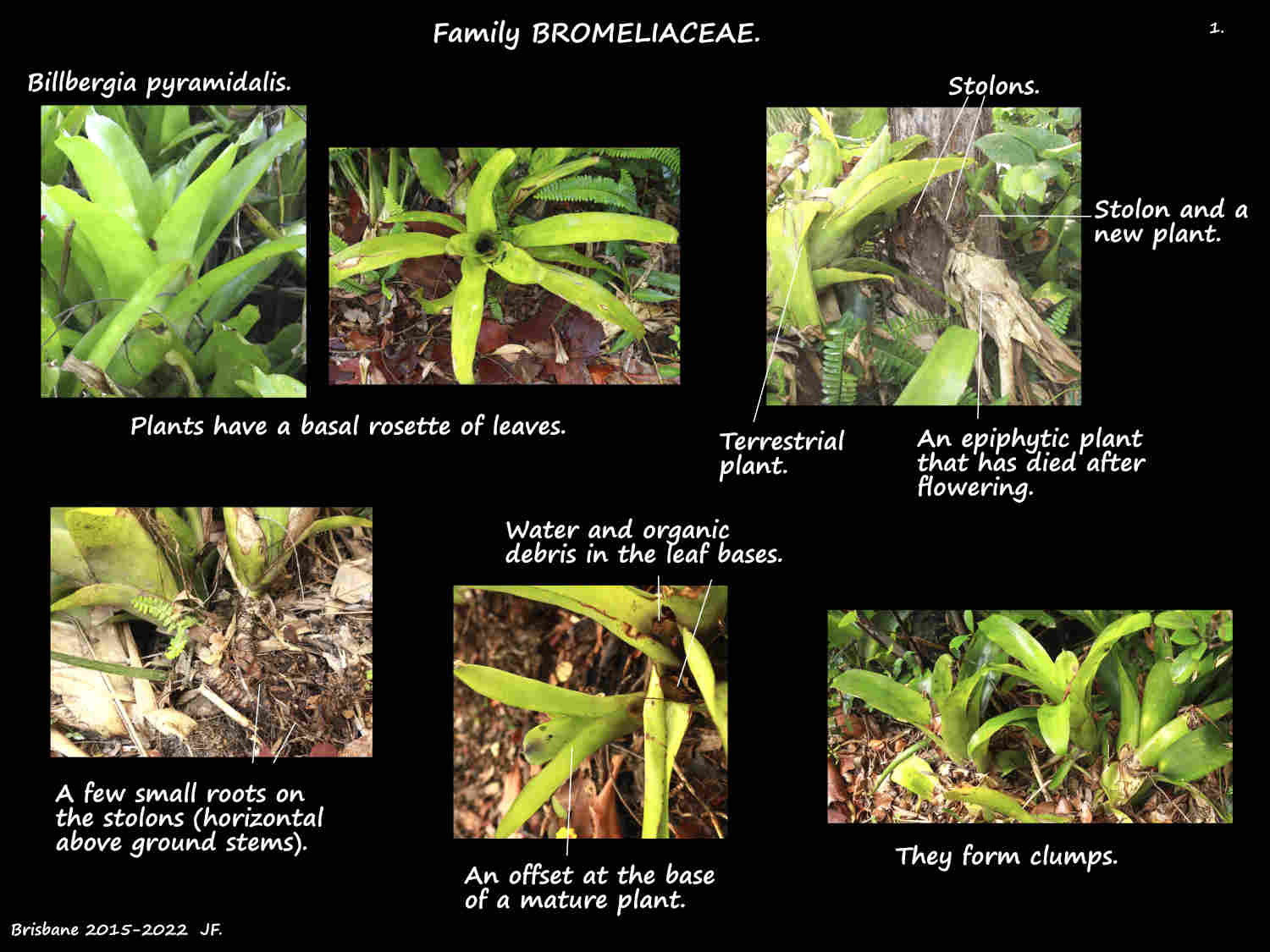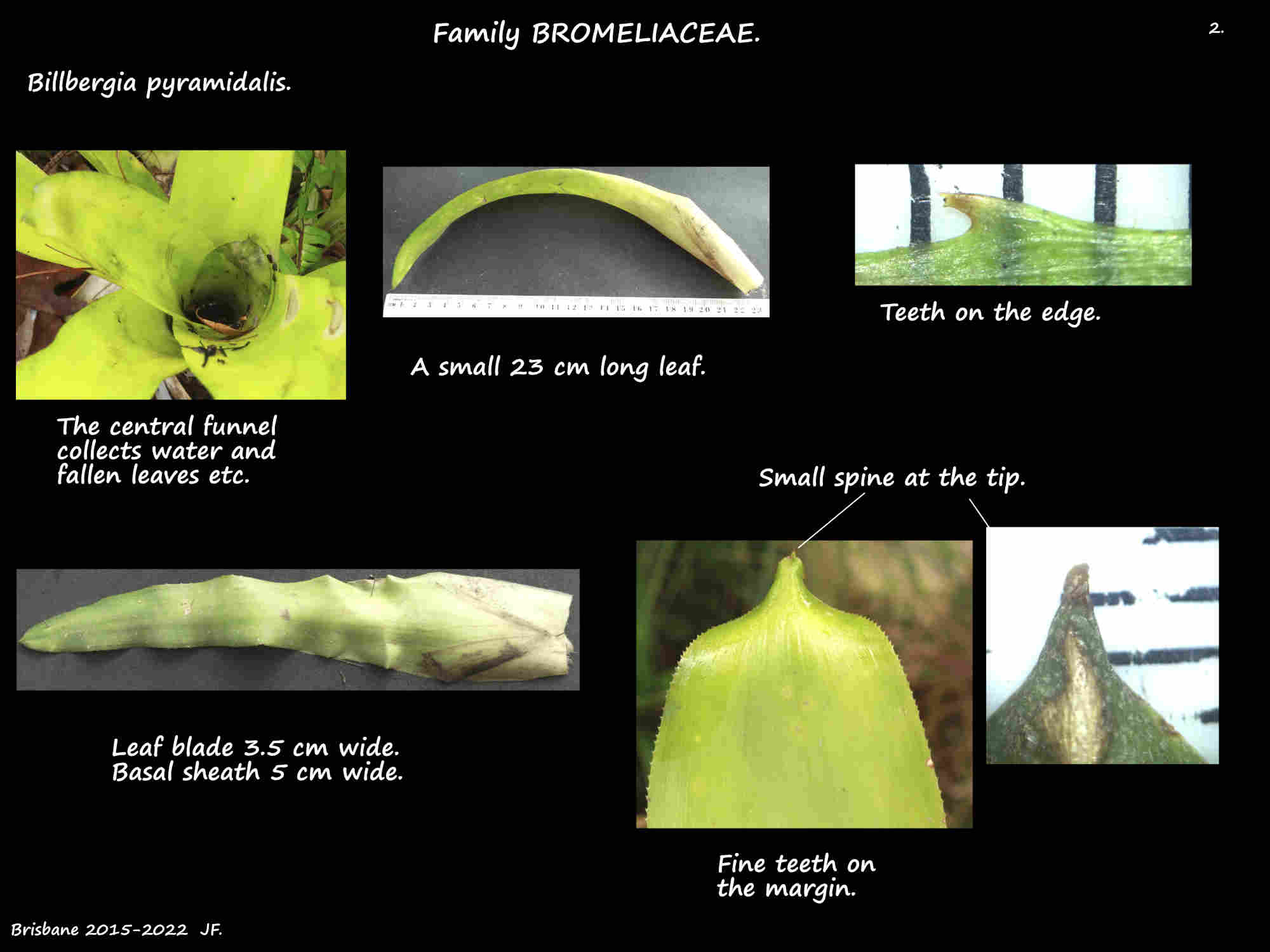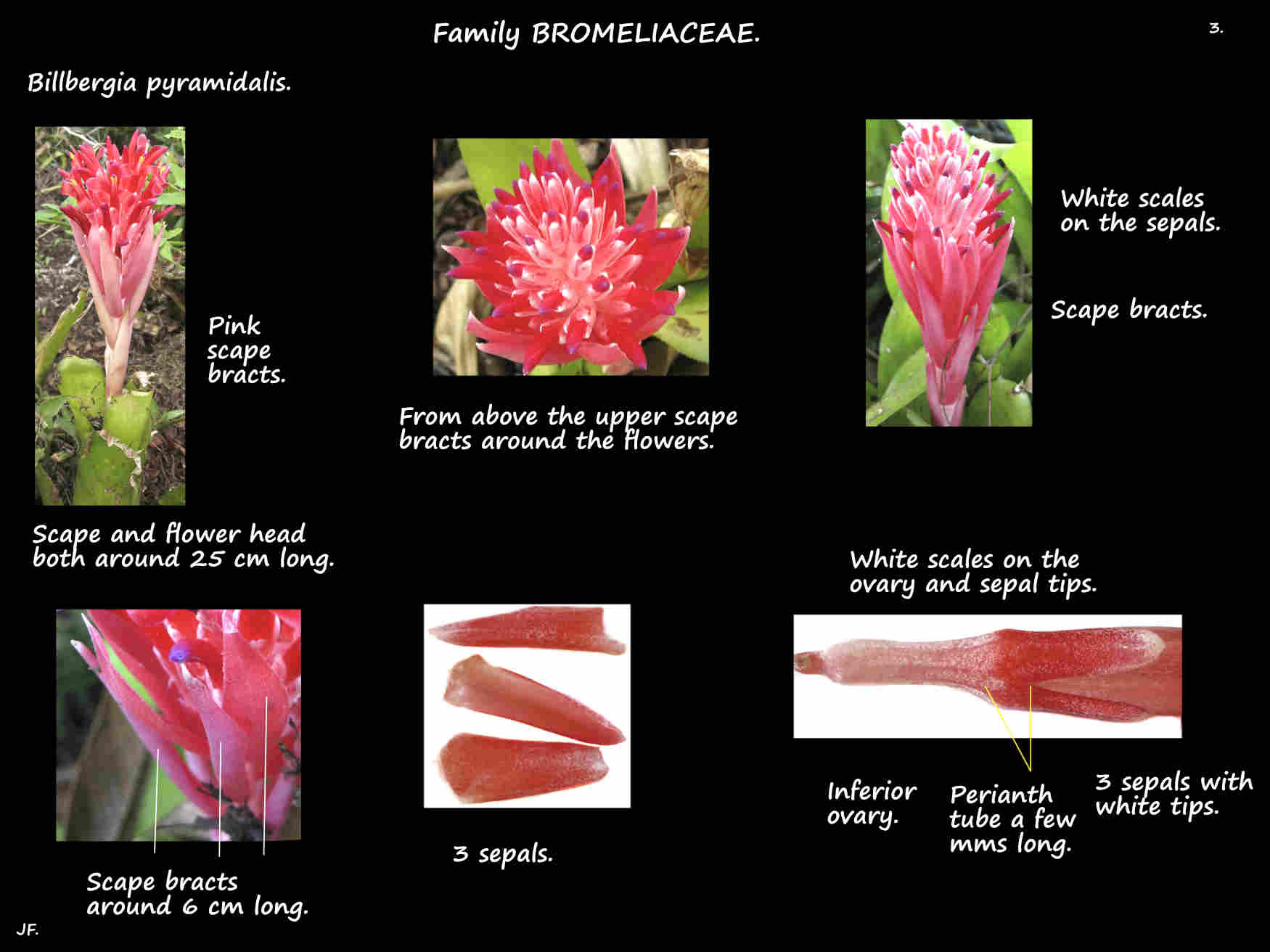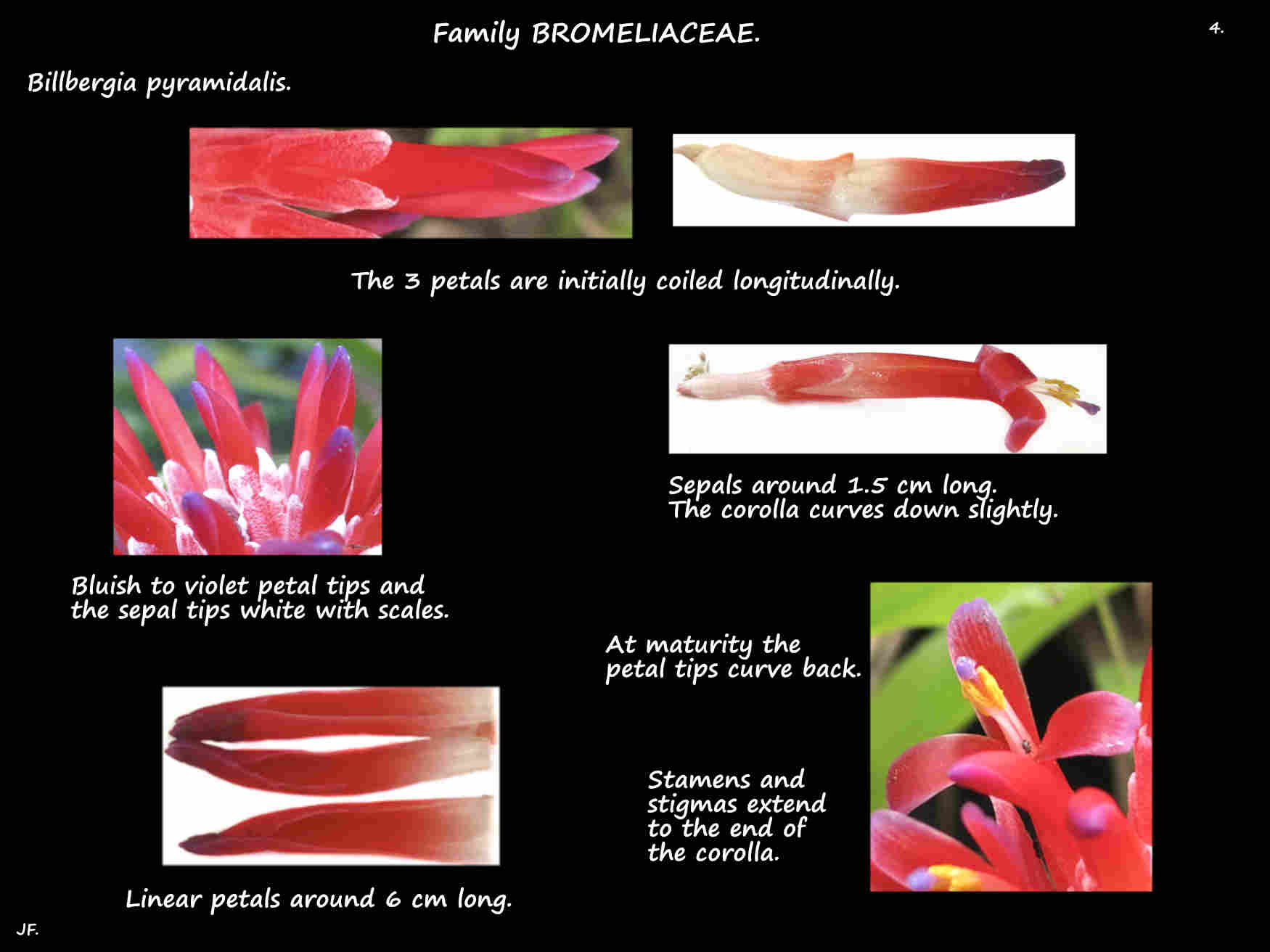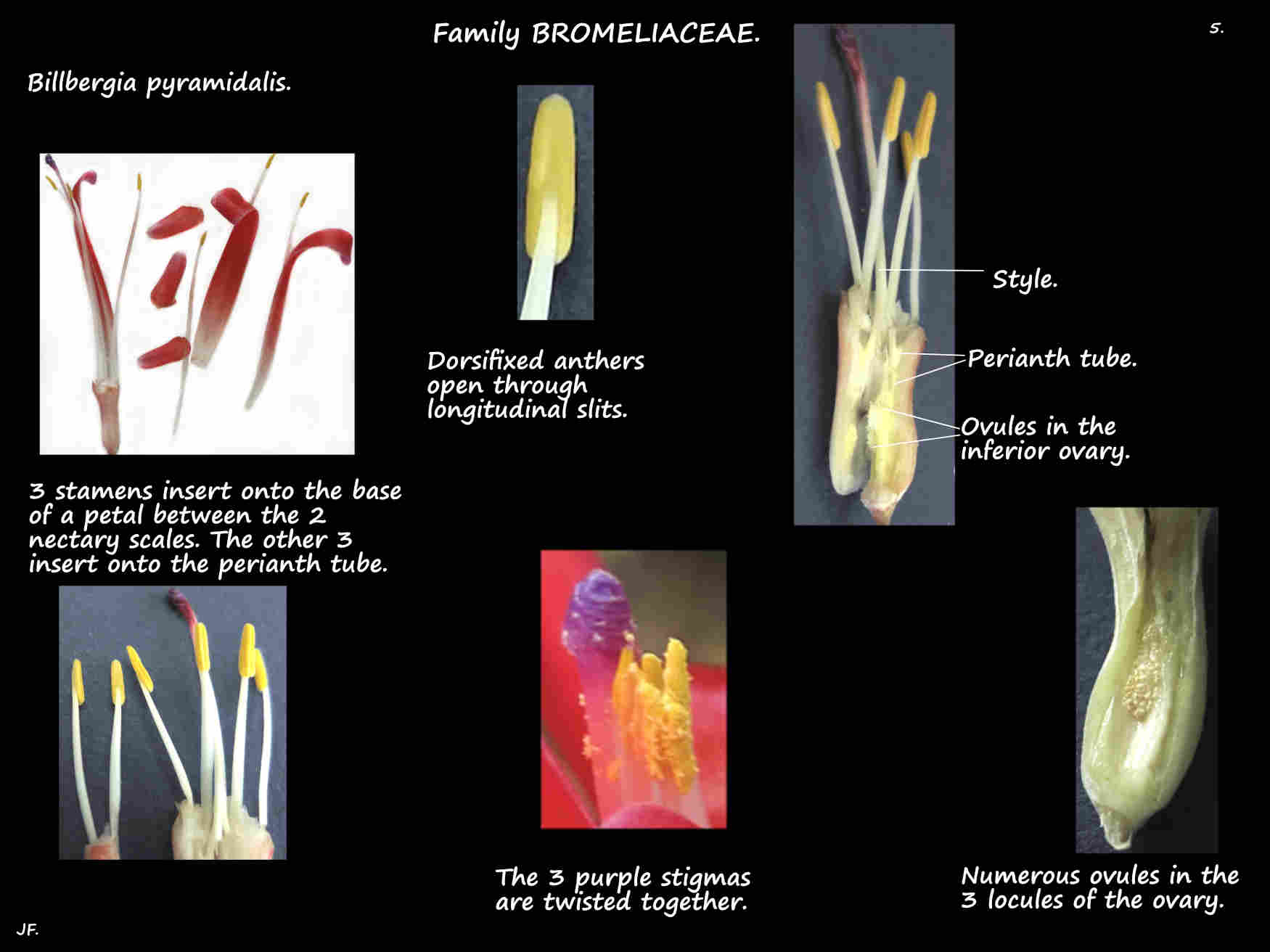Billbergia pyramidalis.
The Flaming torch or Foolproof plant is native to Brazil and the Caribbean.
There are 30 to 40 synonyms.
They are epiphytic but will grow on the ground where they can form large clumps.
New plants grow from nodes on the stolons (horizontal above ground stems).
There is no vertical stem holding the leaves which form a funnel-shaped basal rosette.
This can hold water and fallen leaves etc. the plant uses for nutrients as its roots are only for support.
Each plant has up to around 12 erect linear leaves with sheathing bases.
There is a ligule (short flap of tissue) at the junction of the sheath and blade.
The green blades are around 50 cm long and 4 to 5 cm wide.
There are small brown spines on the leaf edge and a longer one on the rounded tip.
There are varying amounts of white or greyish scales on both surface but mainly the lower.
On the lower surface the scales may form transverse bands.
Terminal inflorescences are around 50 cm high with half being the scape (stalk) and half the flowers.
The scape is initially densely covered in white scales.
The overlapping elliptic to lanceolate scape bracts are around 6 cm long.
They are pink but look pale due to the thick layer of scales.
The unbranched spike of flowers is up to 14 cm high and 8 cm wide.
Each flower is on a short stalk or pedicel which may have a minute floral bract or none.
Most parts have some pale scales.
The tubular, slightly curved flowers are up to 8 cm long.
They have 3 sepals and 3 petals whose bases are fused for a few mms forming a short perianth tube.
The sepals, up to around 1.5 cm long have a blunt or slightly pointed tip.
They are red with pale scales that are very dense towards the tip.
The free petals are around 6 cm (4 to 8) long and 0.5 cm wide.
They form a tubular corolla that curves down slightly.
At maturity the rounded tips of the petals curve backwards.
The petals are red with bluish to violet tips.
At the base of each petal are 2 nectary scales with short blunt teeth on the upper edge.
There are 6 stamens in 2 whorls.
The outer whorl inserts onto the base of a petal and the other 3 onto the perianth tube.
The yellow dorsifixed anthers open through longitudinal slits.
The inferior ovary, around 13 mm long has 3 locules.
The style has 3 tightly twisted purple stigmas.
The fruit are purple berries around 2 cm long with numerous seeds.
After flowering the plant dies but new ones grow from the basal offsets.
There are a number of cultivars.
J.F.

